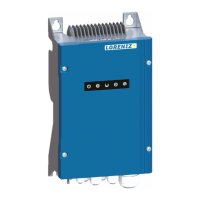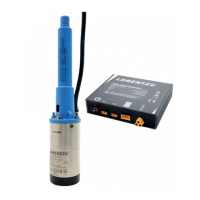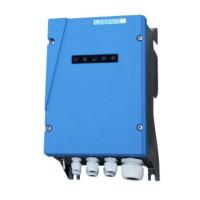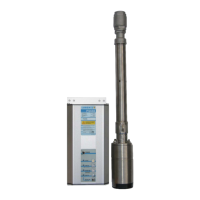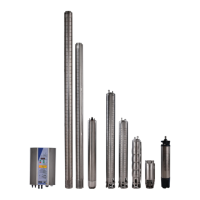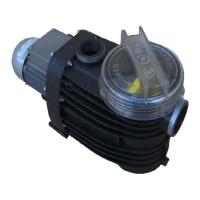Installing the Solar Array3
Location of the Solar Array3.1
Sunlight is the “fuel” that drives a solar pump. Full solar
exposure of the solar array is critical for full performance of
a solar-direct system. Choose a location for the solar array
that has unrestricted sun exposure throughout the day
all the year. The array can be placed several hundred feet
(100 m) or more from the wellhead. There will be no loss
of performance if the electrical wire is sized properly, but
naturally, the cost of wire will increase significantly.
The system sizing table specifies wire size requirements
for both normal and extended wire lengths.
CAUTION Shading a small portion of
a PV array may cause the pump to
stop completely.
Each PV module (panel) contains a series of solar cells
(typically 36 or 72 cells). Every cell that is shaded acts like a
resistor, reducing the output of the ENTIRE ARRAY. Shad-
ing just a few cells will reduce the power disproportion-
ately, and may stop the pump. Consider this when deciding
where to install the array.
To determine where shadows may be cast at any time of
the year, you can survey the site with a Solar Pathfinder
®
.
This device is especially useful in forested areas or wher-
ever there are obstructions nearby. It is available directly
from Solar Pathfinder (USA), tel. ++1 (317) 501-2529, fax
++1 (931) 590-5400, www.solarpathfinder.com
Place the bottom edge of the array at least 2 ft (0.6 m)
above ground to clear rain spatter, growing vegetation and
snow. Keep in mind that trees and perennial plants will
grow taller in the coming years.
Solar Array Assembly Methods3.2
There are two ways to install the solar array.
Assemble the array on the ground, wiring and all, 1.
then lift the entire assembly onto the pole or roof. A
system of 300 W or more may require the assistance
of a backhoe, boom truck or crane to lift it over the
pole.
Assemble the array piece-by-piece on the pole. If the 2.
pole is higher than about 6 ft (2 m), it is best to con-
struct a temporary platform, like a scaffold assembly
commonly used in building construction. A scaffold
system can be rented from a local supplier.
Solar Array Mounting Rack3.3
WARNING Your mounting structure
must be engineered for wind resist-
ance and safety.
Follow the rack (or tracker) manufacturer’s instructions that
are packed with your rack.
Solar tracking A solar tracker is a special pole-mounted
solar array rack that tilts automatically to follow the daily
path of the sun. In clear summer weather, it can increase
your daily water yield by 40-50 %. (It is much less effective
in winter and in cloudy weather.)
Sun Compass instructions
Draw an arrow from month dot to intersection of 1.
your local standard time and latitude Northern
(50° N to 70° N). The gray line is an example:
August, 2pm at 40° N lat.
Stand and face your shadow.2.
Hold this page horizontally.3.
Point the arrow that you drew to center of your 4.
shadow.
Sun Compass™ now points to the four direc-5.
tions.
Sun Compass™ is available for the following latitudes:
U.S.A. (25° N to 55° N) – shown here1.
Northern (50° N to 70° N)2.
Equatorial (20° N to 20° S)3.
Southern (10° S to 40° S)4.
To obtain reproduction rights, contact: John Veltman PO
Box 23533, Santa Fe, NM 87502, USA
North
South
June
July
May
August
April
September
March
October
February
November
January
December
pmam
EastWest
Orienting the Solar Array to Solar South3.4
For full performance, your solar array must be oriented
within 10° of true (solar) South. Depending on your loca-
tion, a compass reading may show an error of as much
as 20°. To correct this discrepancy, apply the magnetic
declination for your region. Many regional maps indicate
the magnetic declination. If you do not have a compass but
can see your shadow and know the time of day, use the
Sun Compass
™
.
SunCompassFigure 1:
™

